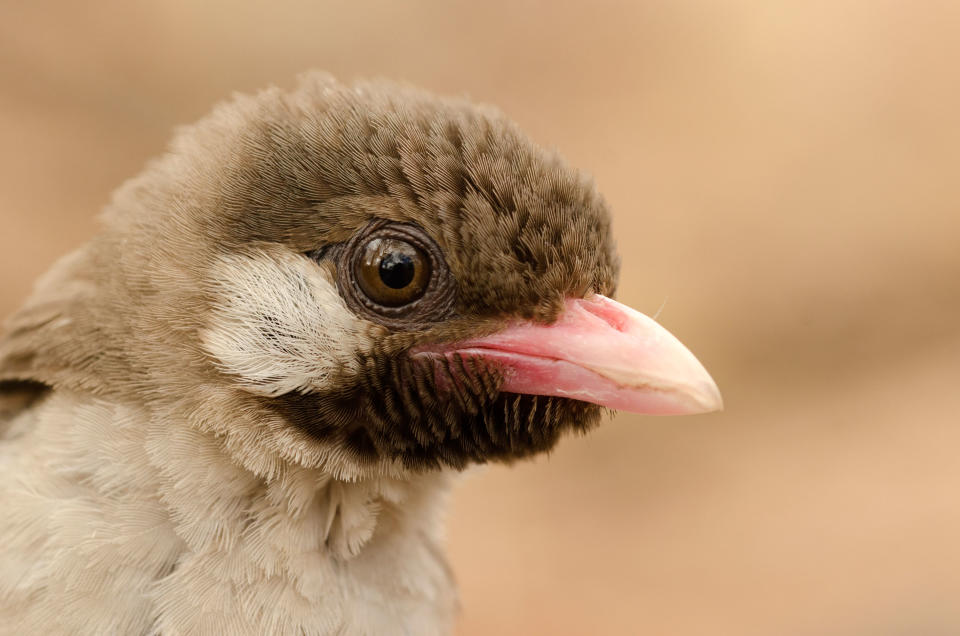The Mind-Blowing Way Tribesmen and Birds Team Up to Find Beehives

Calling to each other with chirps and yelps, a species of bird and a tribe of humans in southeast Africa forage for honey in unison. The birds lead the way to hidden beehives, which are camouflaged among high tree branches. The tribesmen crack open the hives and share the sweet spoils of victory with their bird friends.
For ages people have trained dogs, birds, horses, and other creatures to help us out in various ways. But this is a rare tale of conscious teamwork between humans and wild animals.

A trio of zoologists led by Claire Spottiswoode, an African bird researcher at the University of Cambridge in the UK, has just documented this astounding relationship. The particular players are Yao tribesmen in Mozambique and wild local birds called honeyguides (or Indicator indicator-pretty cool name, huh?). As the zoologists describe in a paper published today in the journal Science, the communication and cooperation goes both ways. When the birds spy a beehive on their own, they can find a nearby human, get his or her attention with a signature chirp, then flit from tree to tree toward the hive. Yao tribesmen can solicit the help of nearby honeyguides with their own unique hail, a birdcall handed down through countless generations.
"What's remarkable about the honeyguide-human relationship is that it involves free-living wild animals... [which] evolved through natural selection, probably over the course of hundreds of thousands of years," Spottiswoode says. Nobody is training these birds. On their own, the birds can't crack open beehives, and the hives are often hidden away from human eyes. So everybody wins. Well, except the bees.
Cross-Species Camaraderie
Spottiswoode sought to prove once and for all that the humans and birds were knowingly working in unison, and that the bird call the Yao tribesmen save for honeyguides actually makes a difference. That bird call sounds like a quick trill that ends with a guttural grunt. The closest onomatopoeia for it is "brrr-hm."
The researchers set up a simple experiment. Working with members of the Yao tribe, she had study participants hunt for honey, trying to solicit the help of local birds using three different automated noises: either the 'brrr-hm' hail, a random word in the Yao language, or an entirely unrelated bird call. To keep the hails constant across different beehive hunters, a handheld speaker made the noises every 7 seconds at the same volume. The results were undeniable.
"The traditional 'brrr-hm' call increased the probability of being guided by a honeyguide from 33 percent to 66 percent, and the overall probability of being shown a bees' nest from 16 percent to 54 percent compared to the control sounds," says Spottiswoode. "In other words, the 'brrr-hm' call more than tripled the chances of a successful interaction, yielding honey for the humans and wax for the bird."
Spottiswoode and her colleagues believe this to be a clear sign of conscious communication from the honeyguide birds. "These results show that a wild animal correctly attaches meaning and responds appropriately to a human signal of recruitment toward cooperative foraging ... a behavior previously associated with only domestic animals, such as dogs," Spottiswoode and her colleagues write. "To our knowledge, the only comparable relationship involves cooperation between artisanal fishermen and free-living dolphins. Several reports exist of men 'calling' dolphins to hunt, starting with Pliny the Elder around 70 CE."

The Learning Process
There's still some mystery as to how exactly young honeyguides learn to recognize the Yao tribesmen's calls. Like the European cuckoo, honeyguides are nest parasites. Adults will surreptitiously lay their eggs in other birds' nests and those birds raise the young honeyguides. This pattern rules out the possibility that the honeyguides are learning how to interact with humans through parental training.
The Yao tribesmen are a different story. "When asked why [they use the brrr-hm call], they reported that they learned it from their fathers and that it is the best way of attracting a honeyguide and maintaining its attention," Spottiswoode and her colleagues write. Those men's fathers learned the calls from their fathers, and so on, with the chain reaching back to long before history.
You Might Also Like

